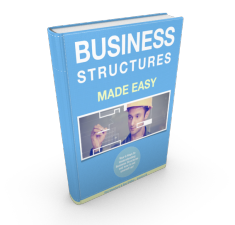Business Structuring Made Easy! Part 6: The Dangers – What if I Get it Wrong?
In order to reinforce the importance of selecting the right business structure, our final article in this series looks at the consequences of getting the choice wrong and the potential costs associated with the transition to a new structure.
Quite often clients start business operations with little to no thought about business structuring and are confronted with multiple complications a few years down the track when changes need to be made.
Income Tax
Any profits made on the transfer of items such as plant and equipment or trading stock between business entities is taxable income in the hands of the entity making the sale. These profits will be reported on the income tax return of the relevant entity and tax will be payable at the applicable tax rate.
Click Here to Download our eBook “Business Structures Made Easy”
If you are transferring out of a company structure, careful consideration must be given to any advances, loans, or intended debt forgiveness by the private company to shareholders and shareholders’ associates. These amounts could potentially trigger Division 7A and create unforeseen income tax consequences for the parties involved.
Capital Gains Tax
Capital Gains Tax (CGT) is a tax charged on capital gains that arise as the result of the sale or disposal of certain assets.
While we cannot hope to cover all of the potential CGT implications of transferring various business assets between business structures and the concessions available to manage the tax on these gains, it is important to highlight that Capital Gains Tax must be considered when changing your business structure.
Stamp Duty
Depending on the state you live in and the type of asset in question it may also be necessary to pay stamp duty on the transfer of assets between business entities.
While most states offer concessions, they do not apply in all cases so you must ensure you have given due consideration to the stamp duty implications on any asset transfers.
Administration Costs and Business Interruption
While not as costly as the other areas of discussion, there are some smaller considerations which may be overlooked in a “big picture” approach to changing your business structure.
The accounting and legal fees incurred in establishing your new business structure and to wind up the old structure can vary from a one thousand to tens of thousands depending on the structural choice and level of advice you require. This process will involve the creation of the new structure and all the associated registrations.
Your new structure will generally have its own Australian Business Number (ABN) and Tax File Number (TFN). This, in turn, means that you will need to establish new bank accounts, update all agreements with your current staff, customers, and suppliers as well as updating the ABN on your existing marketing material.
During the financial year in which you make the transition between business structures it may be necessary for your accountant to prepare financial statements and income tax returns for both business entities. This will increase the cost of your compliance work for the year.



